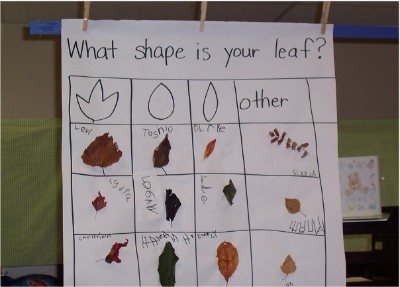Question
What items do I use to document in early childhood education?
Answer
When you document, there are certain tools that will make it easier for you. These include pens, paper, clipboards, digital cameras (smartphone, iPad, or another device that captures photo, video, and audio), computers, printers, and a system for storage, such as the cloud. Different types of products create different types of artifacts. The e-portfolio is similar to an artist's portfolio or can be a notebook that has different sections in it. If I do a paper version in a notebook, I like to start by using tabs to separate the notebook into the areas of development including cognitive development, motor development, et cetera. Sometimes I'll use tabs to differentiate projects the child has done. Pick your topics and then start inserting things. The e-portfolio is great and there are a number of different tools you can use online. I've even been doing these with my college students and we make our own learning visible. We are documenting our learning and I have them create it. But in a sense, they are learning how to do it for children by doing it on themselves.
You might've heard of panels. These are similar to the old-fashioned bulletin board, but a panel is very intentional. It tells a story and is not just putting up everybody's finger painting. It would be intentional. It might only have two people's finger painting papers, but it's going to tell the story of why these two are important, what they are doing, and how this provides evidence of what the child is doing. For example, maybe it's motor development and we are all using our pointer fingers because we are learning to write letters in the finger paint. Whatever it is, your panel tells your story. It's not for every single child. It's going to tell the story of a concept.
You might use videos. Remember, you're not playing a whole video. You're choosing elements of videos to include and to incorporate that would show evidence of learning. It might only be a 30-second video of having a child learn to read. It's going to be something small, but intentional.
The bulletin board is still important. It's similar to the panel, but it might just be a collective place. I love to do child bulletin boards where they get to celebrate and put up things they are proud of. That's another way to reframe what they are doing. I also like to use frames to show work. I go to the thrift store and get a whole bunch of those big wood frames, take out whatever's in the inside, and let children put pieces of artwork in it. Then I have children tell me why they put that in there. They can tell their story and you can put their words inside the frame with their piece of artwork or their work sample.

Figure 1. Example of documentation.
Figure 1 is another type of documentation that is similar to what a panel is, but it's just a simpler way. We went outside and collected different types of leaves during the fall and then put them on a piece of butcher paper. We compared the leaves and noticed there were all kinds of leaves. The children put their names in the chart by their leaves and we had all kinds of conversations. We then turned that into a KWL chart. This was actually the project of a student I was observing. She did a fabulous job and connected the activity to the different early learning guidelines in our state. Alaska Early Learning Guideline 34 is children demonstrate knowledge of numbers and counting. That includes children sorting objects and then counting and comparing them. It also includes sorting objects by one attribute into two or more groups (big, medium, and small). This documentation provided evidence of the children learning those things.
This Ask the Expert is an edited excerpt from the course, Documentation: Making Children's Learning Visible, presented by Hilary Seitz, PhD.
